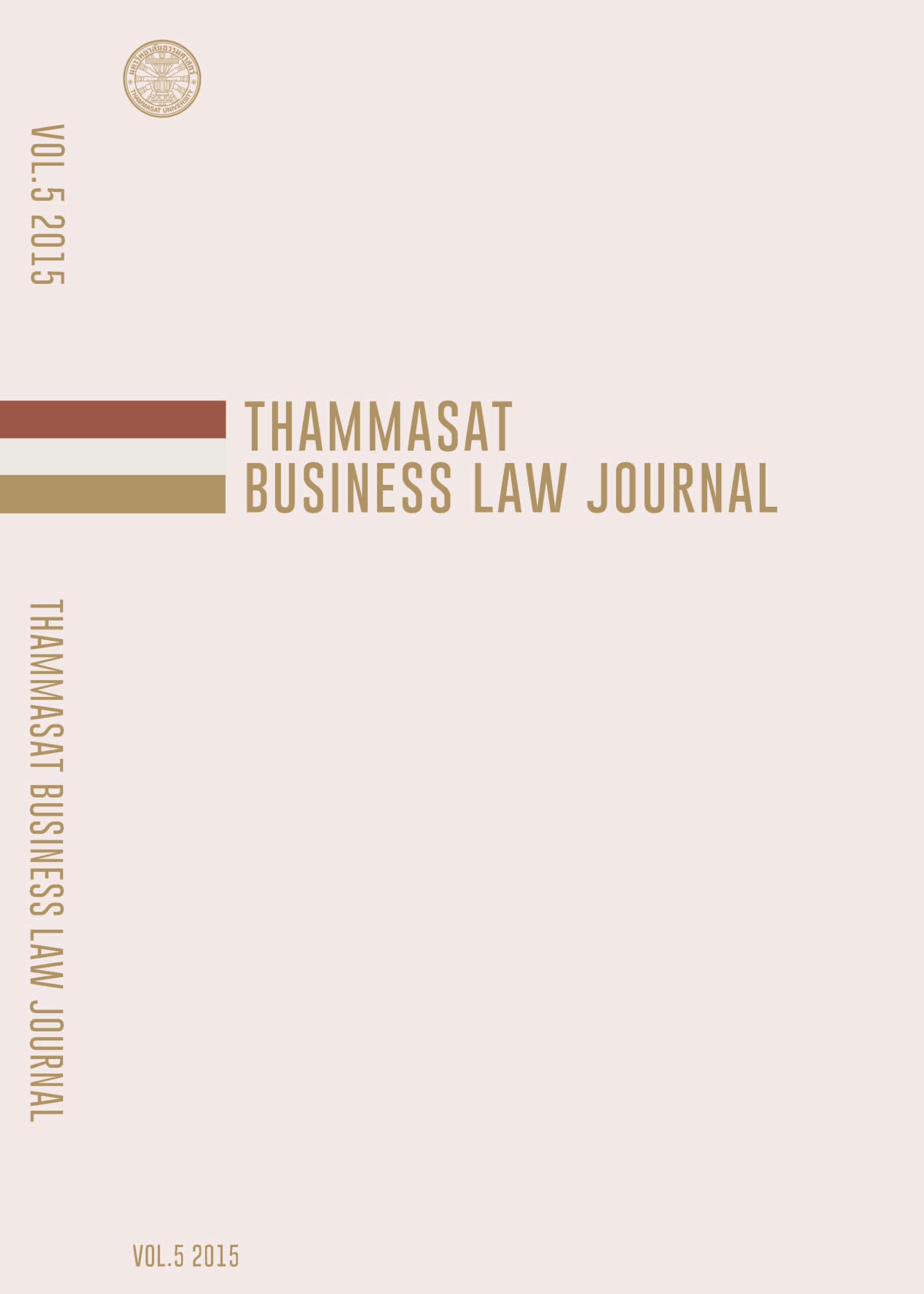ZONING MEASURE BY INCLUSIONARY ZONING FOR AFFORDABLE HOUSING
Main Article Content
Abstract
City Planning is a key mechanism for government to manage and control the direction of the city. City Planning arranges all areas into zones according to land use classification. Each classification indicates activities that are allowed or disallowed to be conducted. City Planning can be enforced when come into the law form.
However, when the City Planning law is enforced, the price of land continuously increases and in turn affects the house price. At present, the price of land and house has been extremely increasing when comparing to the past. Many consumers cannot afford to buy a house because their income is too low, so they are forced to live far from the city center. Hence, these consumers have to face many inconveniences such as daily traffic jam and stress; such difficulty is considered adverse effect of Planning law.
The City Plan Act, B.E. 2518, disregards the affordable housing issue. This act supports the zoning planning and city plan procedure and makes the zoning planning and city plan concrete and enforceable. However, there is no provision that would encourage developers to supply the affordable housing while they could still enjoy profit due to they have much potential than consumer to access to the public resources. As a result, many consumers have to face the problem of unaffordable housing or be forced to live in the areas which are far from the city as the accumulated problems.
The sustainable growth of society, private sector and consumer can occur if there are more dimensions in laws which balance benefit among stakeholders, implement good planning, and support co-operation between government, private sectors, and consumer.
This thesis studies the relationships between City Planning law vs. land price, the Corporate Social Responsibility concept (CSR), existing Planning law, the alternative planning system which called “Inclusionary Zoning” and applications under the Inclusionary Zoning Law of three selected foreign countries, namely the California and Oregon State in the United States, the United Kingdom, and Malaysia. From studying these countries, it is anticipated that Thailand would see the problems arising from legal measures against the unaffordable housing which is the adverse effect of planning regulations and thus be able to provide proper legal measures to cope with the issue. This thesis also identifies and recommends alternative solutions.
Article Details
References
Zoning Reclaimed, 1996.
Dustin C. Read, Jd., Inclusionary Zoning, Homes for Working Families, Inc., May 2008.
Peter V. Schaeffer & Cecily A. Millerick, The Impact of Historic District Designation
On Property Value: An Empirical Studies, 5 Econ Dev. Q. 301, 311, 1911.
ขนิษฐา เทียบจริยาวัฒน์, การศึกษาแนวทางการวางและจัดทำผังเมืองเฉพาะใหม่, มหาวิทยาลัยศิลปากร 2553 [Kanittha Tiebjariyawat, A study to propose guidelines for preparing and making a new specific plan, Silapakorn University B.E.2553]
งานสัมมนา CSR In Action เครือข่ายธุรกิจเพื่อสังคมและสิ่งแวดล้อม SVN Asia (Thailand) ร่วมกับสำนักงานปฎิรูประบบสุขภาพแห่งชาติ สถาบันธรรมรัฐเพื่อการพัฒนาสังคมและสิ่งแวดล้อม ภาควิชาเศรษฐศาสตร์ คณะสังคมศาสตร์ มหาวิทยาศรีนครินทร์วิโรฒ มูลนิธิซีเมนต์ไทยวารสารธุรกิจกับสังคมสถาบันสิ่งแวดล้อมไทย สถาบันคีนันแห่งเอเชีย [CSR in Action
Seminar, Social & Environment business network, SVN Asia(Thailand) co-
operation with the National Health System Reform Office (HSRO), Good
Governance for Social Development and the environment Institute (GSEI),
Economic Faculty of Srinakarinwirot University, SCG Foundation, Business &
Social Journal, Thailand Environment Institute Foundation and Kenan Institute
Asia].
ณฐกันต์ ด้วงปาน, การบังคับใช้ผังเมืองเฉพาะเพื่อการจัดการสิ่งแวดล้อมเมืองและชุมชน, นิติศาสตร์บัณฑิต คณะนิติศาสตร์ มหาวิทยาลัยธรรมศาสตร์, 2556, [Nattakun Duangpan, The Enforcement of Specific Zoning for Environment and Community Management, Faculty of Law, Thammasat University].
วารสารธนาคารอาคารสงเคราะห์ ปีที่ 4 ฉบับที่ 13 เมษายน-มิถุนายน 2541 [Government
Housing Bank Journal, 4th Year, Volume 13, April-June B.E 2541].
ศูนย์บริการวิชาการ คณะสถาปัตยกรรมศาสตร์ จุฬาลงกรณ์มหาวิทยาลัย, รายงานฉบับสมบูรณ์ โครงการจัดทำ มาตรฐานด้านผังเมืองของกรุงเทพมหานคร, [Educational Service Center, The Final Report: The Standard Zoning Process in Bangkok Faculty of Architecture, Chulalongkorn University].
เอกบุญ วงศ์สวัสดิ์กุล, ความรู้เบื้องต้นเกี่ยวกับกฎหมายผังเมือง พร้อมด้วย พ.ร.บ. การผังเมือง พ.ศ. 2518 และกฎหมายประกอบ, สำนักพิมพ์นิติธรรม 2538 [Ekboon Wongsawatdkul, Introduce to the City Plan Law along with the City Plan Act B.E. 2518 and the supplement laws, Nititham Publisher B.E. 2538].
Demographia, “The Association between Prescriptive Land use and Higher House
Prices.” http://www.demographia.com/db-dhi-econ.pdf (accessed June 1, 2015).
International Federation of Accountants, “Good Governance and Sustainablility Fundamental to Improved Business Reporting”, Project on Business Reporting, June 2010, http://www.ifac.org/sites/default/files/downloads/Good-Governance-and-Sustainability-Fundamental-for-Improved-Business-Reporting.pdfInnovative (accessed June 1, 2015).
Nicholas Brunick, Lauren Goldburg, Susanna Lehvin, “Voluntary or Mandatory Inclusionary Zoning, Production, Predictability and Enforcement”, Business and Professional People for the public interest, August 2004 http://www.bpichicago.org/documents/mandatoryv.voluntary5.06.pdf (accessed June 1, 2015).
OECD, “Corporate responsibility: Frequently asked questions: What is corporate responsibility?”available at: http://www.oecd.org/corporate/mne/corpo
rateresponsibilityfrequentlyaskedquestions.htm (last visited June1, 2015).
PolicyLink, “Inclusionary Zoning”, 2003, http://www.policylink.org/site/c.lkIXLbMN
JrE/b.5137027/ (accessed June 1, 2015).


